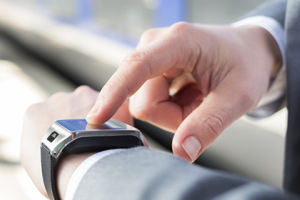Wearable devices like fitness bands, digital glasses, medical devices, smart watches, smart clothes and various other devices that augment our reality promise to radically change the manner in which information is collected, stored, processed, delivered and used.
These devices are helping people in tracking their physical activities, sleep pattern, location, check emails on the go, listen to music etc. The potential benefits of wearable devices are manifold, as they make our life more connected, hands-free and efficient.
There has been lot of buzz around how wearables will continue to enhance our daily lives. Wearables are starting to show their influence on our personal lives, and with so many technology giants like Google, Apple, Microsoft, Intel, Nike etc. competing to be in the forefront, it’s hard to imagine that wearable technology won’t be popular eventually, says Tushar Bhatnagar, IoT project manager with TechMahindra.
International Data Corporation (IDC) forecast that by 2019 there will be 214.6 million units of wearable devices sold globally, with a compound annual growth rate (CAGR) of 28%.

No matter how exciting it seems for end-users, it’s actually the business implications of wearable devices that are worth noting. Wearables are helping us in increasing productivity, efficiency, safety, and creating tremendous opportunity for growth.
In the retail sector, wearable devices are bringing improved shopping experience by providing a differential experience for each buyer, improving customer service throughout the store, improving loyalty program and speeding up purchases. In manufacturing, they increase productivity by creating hands-free guidance tools. In healthcare, they ensure accuracy and sufficiency of user’s medical information at desired intervals, thereby, helping the clinician in predicting their diagnosis, prescribing appropriate treatment, streamlining suitable procedures and facilitating clinical trials.
In advertising, it is being used to deliver marketing messages directly to the users, facilitating seamless engagement with media and devices and securing more advertising inventory to drive e-Commerce. Irrespective of the sector employing the wearables, effective implementation of this technology benefits both the user and the enterprise adopting them, by increasing efficiency and efficacy.
A study by Salesforce Research found that users using wearable devices experience an improvement in their business performance, wherein 79% agree that wearables are, or will be, strategic to their company’s future business success and 86% plan to increase their wearable investment.
However, consumers are sometimes skeptical about the impact of wearables on privacy and security of their personal information. If proper security measures are not taken a hacker can spy on their health records, take a view of their home from a remote location and know whereabouts of their family members, or even worse it can take control of their medical device to send incorrect messages which could even be lethal. The U.S. FDA has expressed concern over the same and urged the device makers to address these wireless vulnerabilities.
Conclusion
In my opinion, measures for privacy and security need to be increased. Moreover, to reach the true potential of wearable technology for both users and enterprises, huge amount of data generated needs to be integrated and an interoperable ecosystem is required to be built, rather than restricting it to a standalone use case. The data needs to be consistent across all devices real time. Wearables should be able to interact with other services and be used in conjunction with the cloud and corresponding big data applications.
Enterprises should begin entering the wearable market by identifying appropriate use cases within their business. They should identify tasks that require users to perform uninterrupted work, without engaging their hands to frantically look for multiple data sources. This can later be evaluated for assessing their productivity, efficiency and efficacy while working with and without the wearables.
Furthermore, they should evaluate which type of wearable display best solves there business problems. It is essential to test the assumptions by experimentation and obtaining feedback from the users and then iterate them before adopting it fully. It’s no longer a question of “if” but “when” the disruptive potential of wearable technologies will become mainstream.
The author of this blog is Tushar Bhatnagar, IoT project manager with TechMahindra
Comment on this article below or via Twitter: @IoTNow_ OR @jcIoTnow










